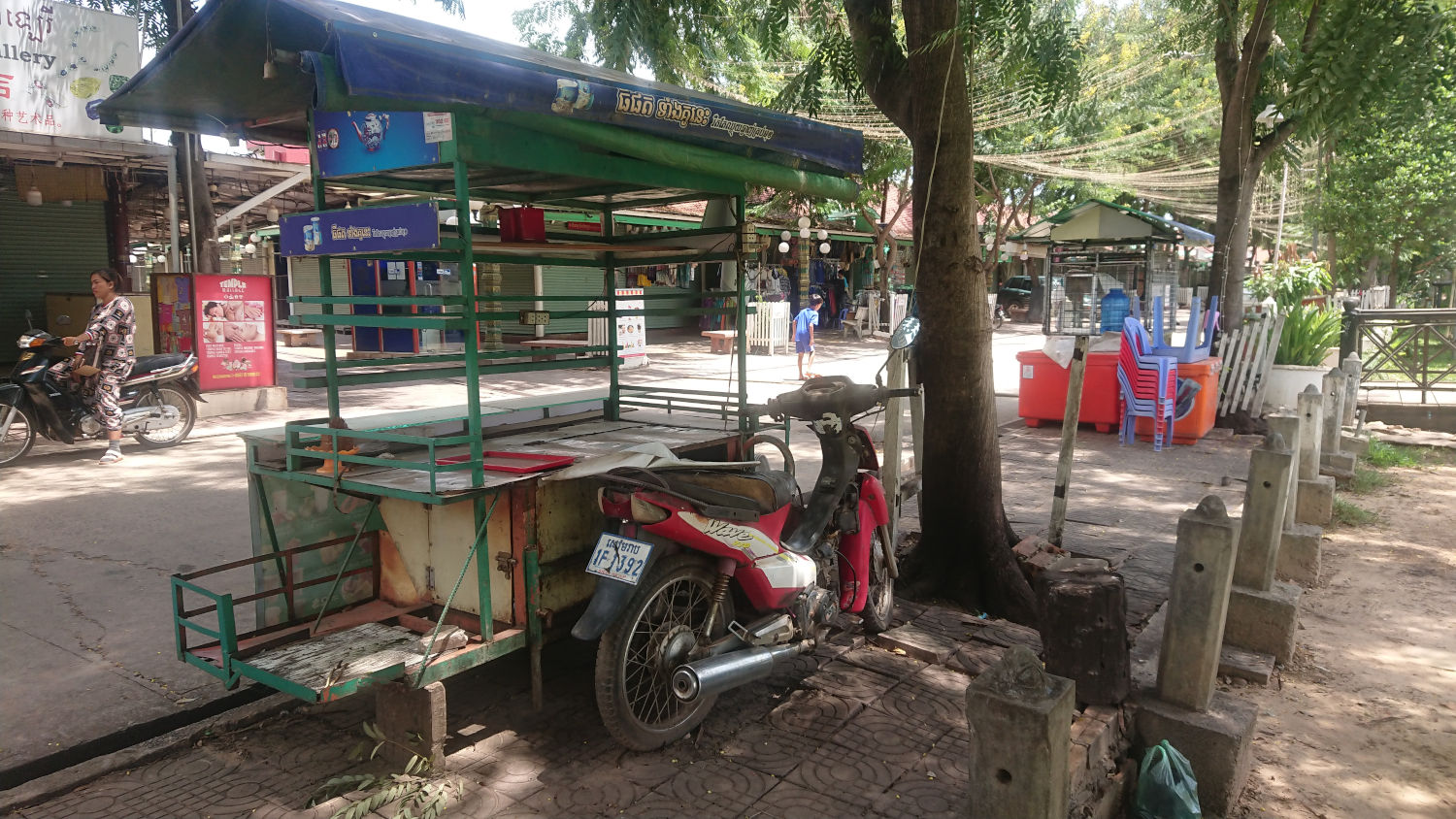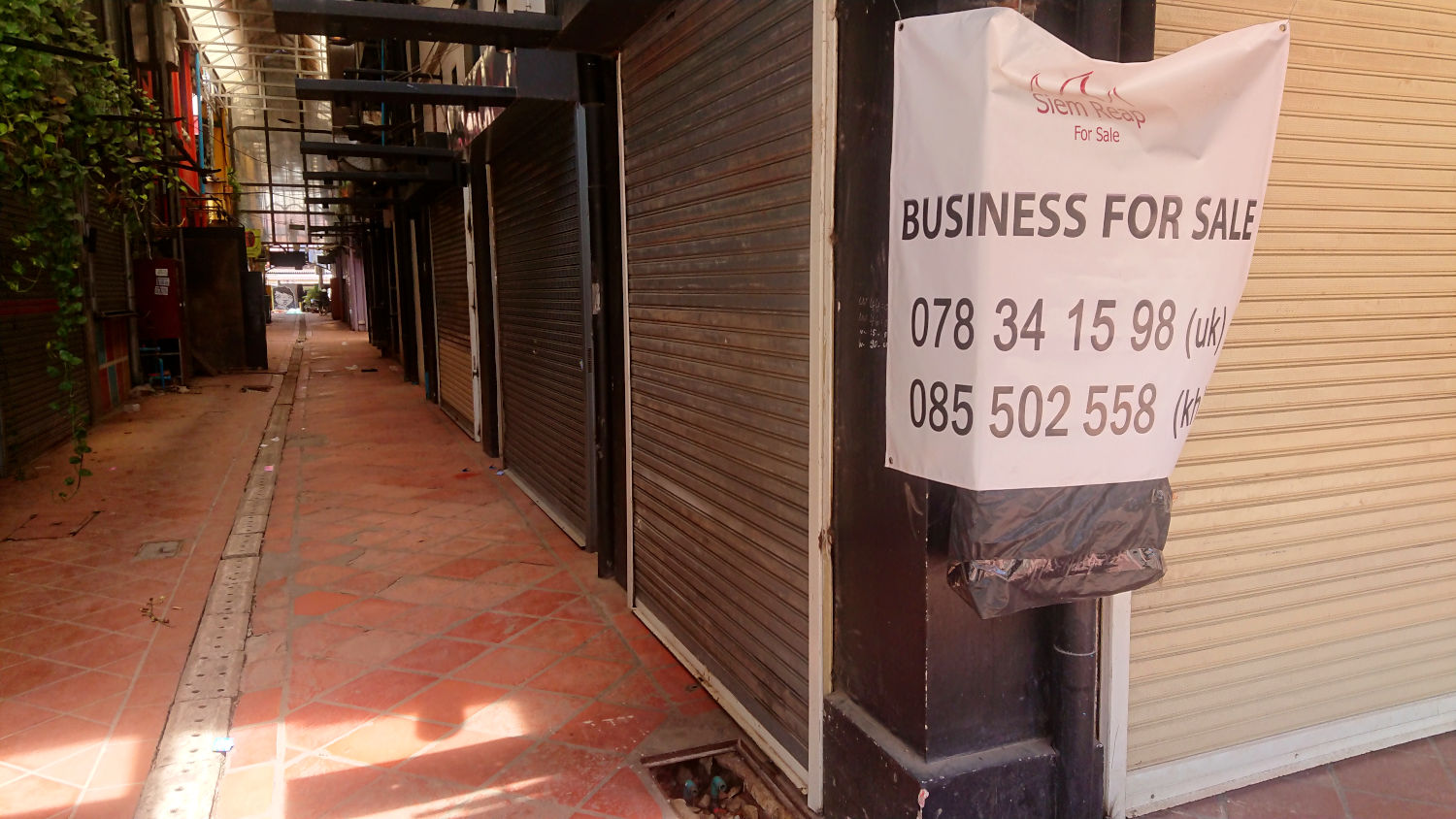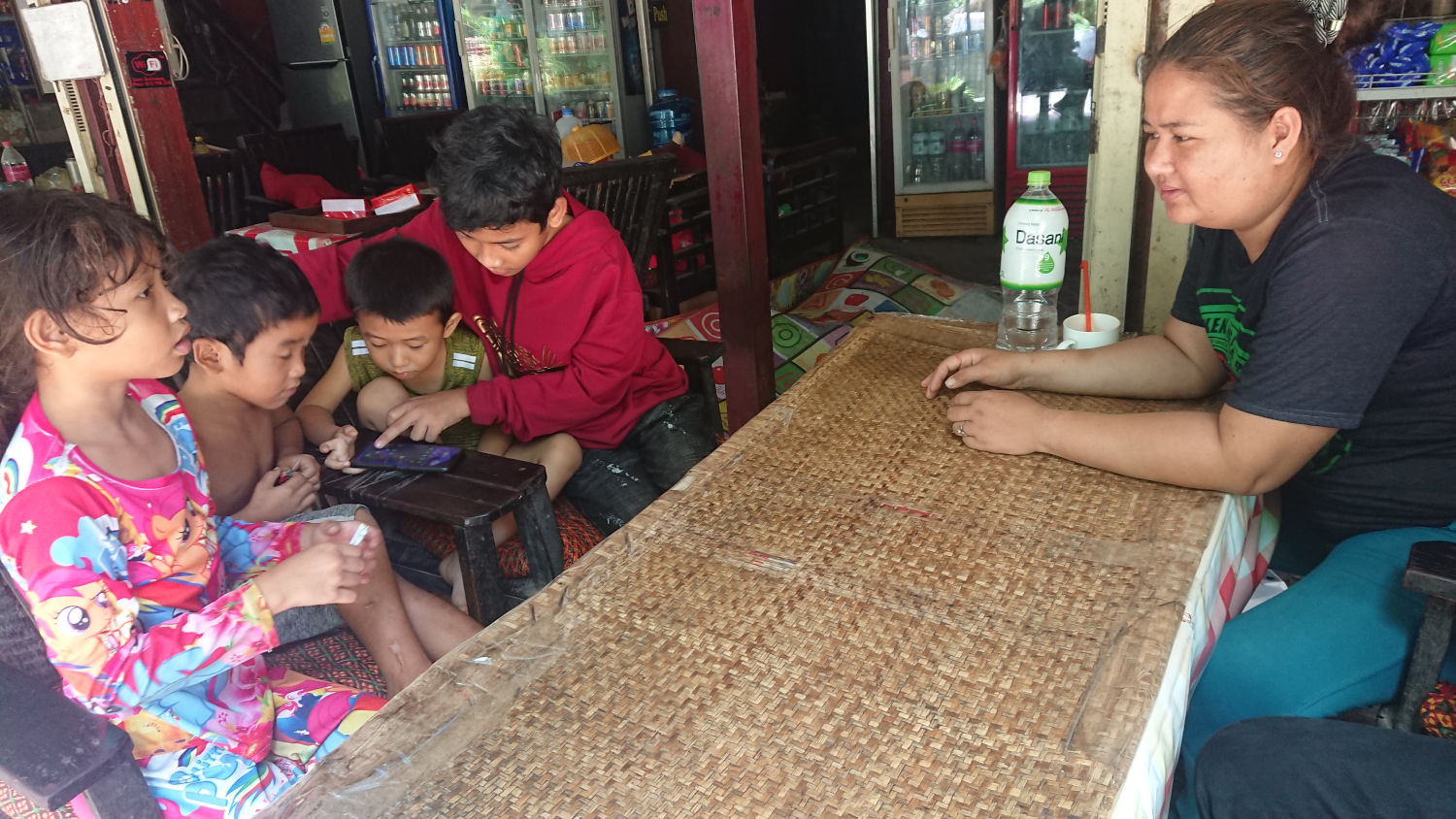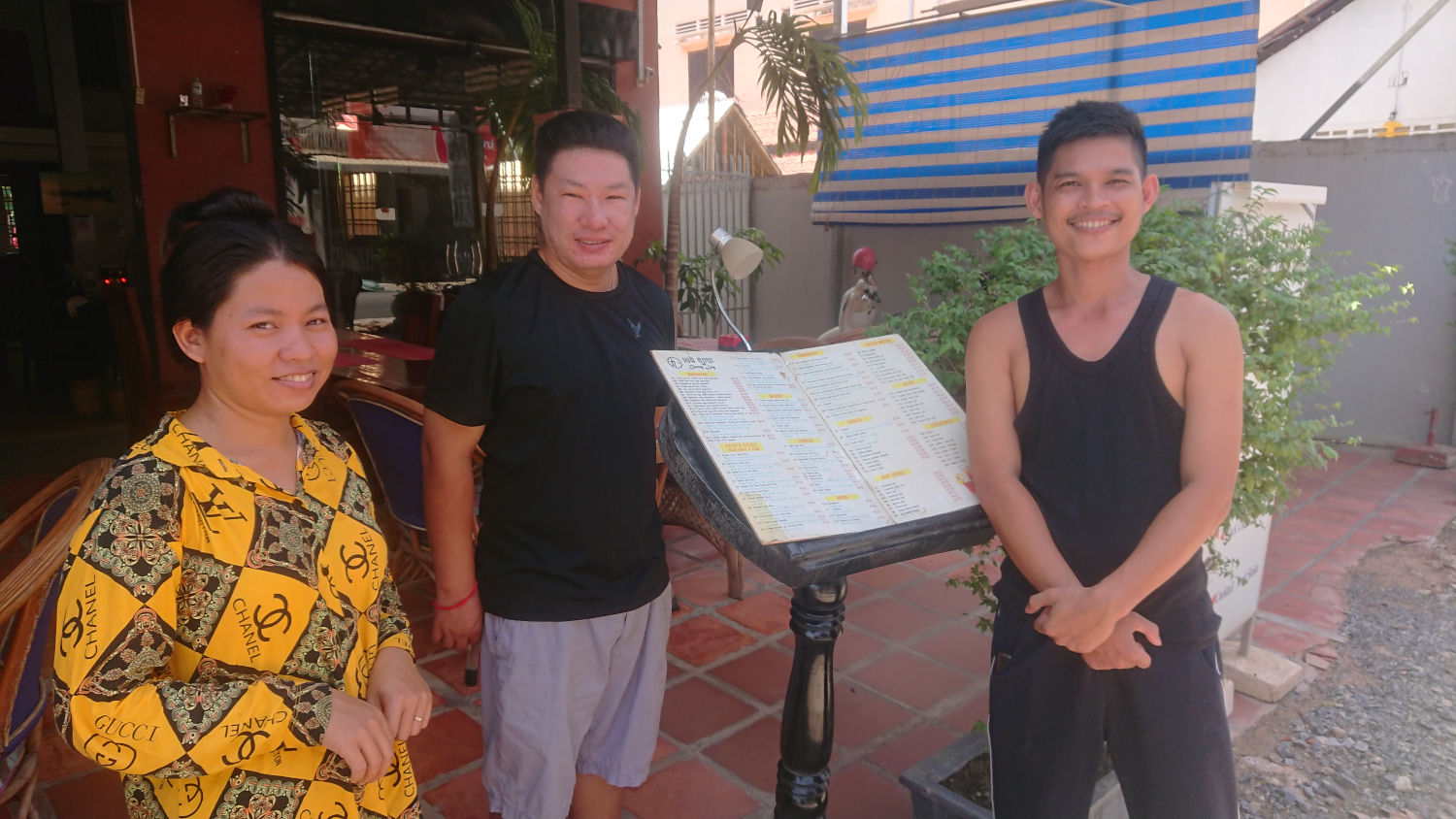Updated:
My name is Tomoyuki Sakurai, or simply Tomi, from Japan, living (or being stranded) in Siem Reap. This is the first post about my project I have been working on since the last year: opening the first makerspace in Siem Reap.
I am drafting a Kickstarter project that outlines what the project is all about. Until the project page is ready, I would like to share the plan in our blog.
Short version: I am trying to open the first makerspace in Siem Reap. The project is part of my own business (I need to survive the pandemic just like you). Still, the project is a community-based project. The space is called Makers. Makers will focus on electronics, wood crafts, IoT, and smart devices.
The project started in early 2019 when I was in Siem Reap. At that time, I was living in Bangkok, Thailand. I finished all the courses, including writing and reading, at a Thai Language school. Learning and mastering Thai was one of my plans after quitting the previous job. I was looking for the next thing to do. There were stories I cannot, and do not want to, disclose, but I was looking for what I should do next. To make a long story short, I realised that I want to help others, or do something that helps others. Since then, I have been working on financial aspect of the project. In 2020 Feb, I signed the rent contract, and became one of many foreign investors in the country.
Before introducing the project proposal in another post, I would like to explain the situation in Siem Reap. I know only micro news around me, and macro views, such as statistics, only. Nothing in between because I have intentionally avoided to read local news.
When you ask Google about Siem Reap, or Cambodia, the search result is full of useful information about the tourism in the country. Most of them are written by tourists, or expats who run business for foreign tourists. I could not find reports, or blog posts, that explain what is going on here. In Thailand, where I spent the last 9 years, there are many bloggers and SNS users who regularly report news, ranging from micro news to the latest government policies. In contrast, we have very few of them in Cambodia. Someone should write the situation in the country. This is the first activity of the project.
The situation in Cambodia

Thailand was one of the most successful countries in ASEAN (but the worst performer in recent years). Thailand, especially in tourism and manufacturing industry, has been hit by the pandemic very hard. The economy had been sluggish even before the pandemic. Many Thais are suffering from economic crisis, not from the pandemic itself. The borders and the international airports are closed. No foreign tourists. Contribution of the tourism in the country to the GDP is around 20%. Shadow economy, including food stalls, small mom-and-pop shops, and businesses outside of the tax system is huge in Thailand. That means that numbers does not necessarily reflect the real impact of the crisis.
The situation is similar, or worse, here in Cambodia. Let’s look at some numbers of the country.
The country has been known as one of the poorest countries in the world. GDP per capita in 2018 was USD 1,510, 20% of Thailand’s. Contribution of the tourism to the GDP is 32.8%.
Johns Hopkins University reports that the number of confirmed positive cases in the country is 130, no death (2020/06/27).
The country’s economy had been improving mostly thanks to China. Annual GDP growth was around 7%, sometimes more than 10% (GDP growth from World Bank.
Sihanoukville, the sea resort of the country, was the major destination of Chinese money. After strict regulations of online gambling and the pandemic, all the money, investors, and Chinese workers left the town, leaving unpaid debts on Cambodians.
“The 20-second hand wash, advised to kill the virus, would mean roughly 1.5-2 litres per wash”, wrote one of Time’s 100 Most Influential People. Of 16 million Cambodia nationals, more than 3 million lack access to safe water (Cambodia’s water and sanitation crisis from water.org).
97.6% of households have access to electricity, 71.5% on the grid (commercial power supply system), 26.1% off the grid (solar power system, or batteries). 69.3% of grid-connected households face frequent unpredictable power shortages (Cambodia - Beyond connections from The World Bank). Many hotels and guesthouses have diesel generators for occasional blackouts.
In 2018, the total number of international tourists arrivals was 6.2 million. Two million from China, or 32%, 13% from European countries, 4.9% from South Korea, 4.0% from the U.S., 3.4% from Japan (Tourism statistics report year 2018). The tourism in Cambodia had been growing before the pandemic. The number of international tourists recorded two digits growth rate in 2017 and 2018. However, in April 2020, the latest number from Ministry of Tourism was impressive; -99% (yes, minus ninety nine percent), or 4,841 arrivals.
At the moment very strict rules apply to those who enter the country, including Cambodian nationals. For foreign tourists, it is virtually impossible to visit Cambodia. Curious readers should read “Travel during the pandemic: Chicago/Sydney > Seoul > Phnom Penh” from Southeast Asia Globe. Unlike other democratic countries, Cambodia citizens are not allowed to complain. The PM has ruled the country for more than three decades. That means no foreign tourists in foreseeable future.


The situation in Siem Reap

After the pandemic hit the rest of world, what happened in Siem Reap? Cambodia has confirmed very few positive cases so far. Most of the positive cases are either foreign tourists, or those who had close contact with them. WHO praised Cambodia’s efforts in the pandemic (The first 100 days of the COVID-19 response).
The situation is not better in any way, though. International flights are canceled, the borders are closed, and potential tourists have been locked in their countries. The government has been helping local businesses by waving some taxes. But that’s all. It was said that there were thousands of restaurants and hotels in Siem Reap. Now, most of them are closed or on sale. The Pub Street, where tourist used to enjoy night entertainments, is literally a ghost town. Only few of family-owned businesses are open. Schools, including public, private, international, and universities, are closed. Some parents demand refund, but the schools have to pay fixed costs. It is unknown that how many of them will be able to stay afloat. Kids are at home all the day. No education. Teachers lost their income. Everyone suffers.

Simon and Katrine, from Norway, the owners of Babel Guesthouse, made a short video to show how Angkor Wat looks now, and how people are affected.
Their property (where I am writing this post, by the way) is still open, but mostly empty. Their employees and local tuk-tuk drivers desperately need money to survive. They decided to do whatever they can do in the hardship.
The project begins

I have never given money to beggars in my life because that will not help them. Giving money to beggars encourages them to return to the street. In general, the purpose of helping others should be making them independent from the help, not just because you are sorry about them. Cambodians never asked me money. They ask jobs. I cannot give the opportunity to them, yet, but I can do something others cannot. They need guides, or assistance, not just money. I would like to help those who help themselves, which is the one of my project’s goals.
Are you still withe me? Of course, you are. You have finished reading a rather long story. Here is a reward for it: the project proposal
